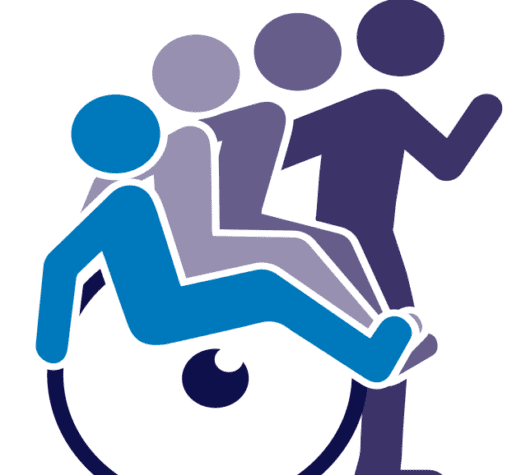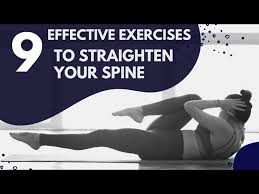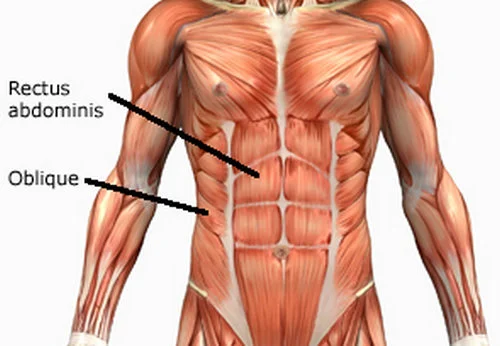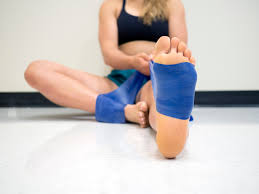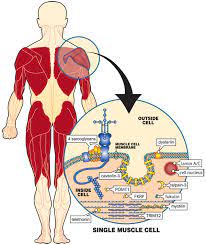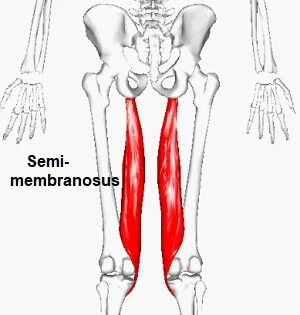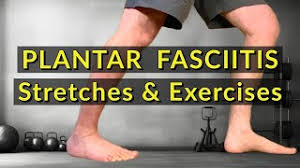9 Effective Exercises to Straigthen Your Spine
Table of Contents
Introduction:
The basis for proper posture, balance, and general body posture is a healthy, straight spine. A bent or hunched back can frequently be caused by poor posture, sedentary lifestyles, or muscular imbalances, which can cause pain and long-term spine problems.
Fortunately, certain exercises can assist in naturally improving spinal alignment, strengthening supporting muscles, and correcting posture. Nine efficient exercises that improve flexibility, straighten your spine, and encourage a strong, erect posture for a pain-free, healthier life will be covered in this tutorial.
Benefits of Nine Powerful Spine-Strengthening Exercises:
Exercises that strengthen the spine are essential to improve posture, mobility, and general health. The following are the main advantages you might anticipate:
- Corrects Posture: By teaching the body to hold itself erect, this technique helps lessen slouching, hunching, and misalignment.
- Improves Core and Back Muscles: Lowers the chance of injury by giving the spine stability and support.
- Relieves Back Pain: By strengthening and extending the surrounding muscles, this technique relieves stress in the lower, mid, and upper back.
- Increases Flexibility and Mobility: Increases the range of motion of the spine, which facilitates easier and more fluid daily motions.
- Improves Healing and Circulation: Encourages improved blood flow to spinal tissues, supporting long-term spinal health and healing.
- Strengthening the supporting muscles that maintain the spine’s stability while moving improves balance and stability.
- Prevents Spinal Deformities: Lowers the chance of excessive lordosis caused by poor posture, kyphosis, and scoliosis.
- Supports All Body Function: Maintaining a healthy spine enhances coordination, vitality, and general well-being since it serves as a link between the neurological system and the body.
9 Effective Exercises to Straighten Your Spine:
Child’s Pose:
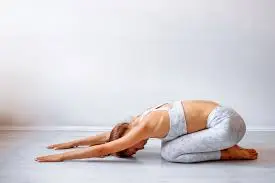
Child’s Pose is a mild yoga pose that lengthens the back muscles, eases spinal tension, and encourages relaxation. Kneel on the floor with your big toes touching and your knees slightly apart to complete this exercise. Lower your chest toward the floor by extending your arms forward while slowly sitting back on your heels.
With your arms relaxed or extended out at your sides, place your forehead on the mat. This posture relaxes the nervous system and relieves lower back tightness by causing a natural stretch along the spine. Regularly performing Child’s Pose helps promote improved posture, lower stress levels, and increased spinal flexibility.
Cat-Cow Stretch:
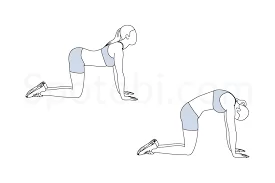
A straightforward yet incredibly powerful exercise for enhancing posture, flexibility, and spinal mobility is the cat-cow stretch. With your knees under your hips and your wrists under your shoulders, start on your hands and knees in a tabletop posture. Lift your head and tailbone upward, lower your belly toward the floor, and slowly arch your back into the “cow” stance while you take a breath.
When you exhale, make the “cat” stance by pulling your belly button in, tucking your chin to your chest, and rounding your spine toward the ceiling. It’s a fantastic daily stretch for spinal health because it allows you to move fluidly between these two positions, which helps release tight back muscles, improve circulation around the spine, and restore its natural alignment.
Cobra Pose:

An effective back-strengthening pose that also helps with posture, spinal flexibility, and chest opening is the cobra pose. To do this posture, stretch your legs and place the tops of your feet on the floor while lying flat on your stomach.
With your elbows close to your body, place your palms under your shoulders. Maintaining your shoulders relaxed and away from your ears, softly press into your hands as you inhale to raise your chest off the ground. Instead of using just your arms to hold the posture, use your back muscles. This exercise is great for keeping a straight and healthy spine since it strengthens the lower back, extends the spine, and reverses the effects of slouching.
Superman Pose:
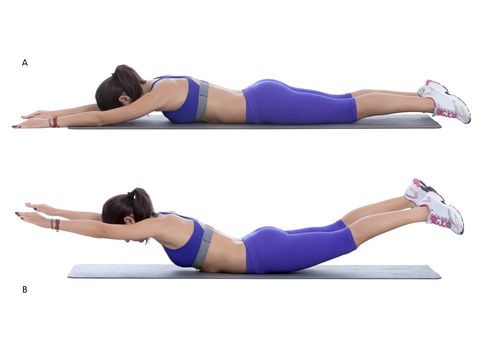
The lower back, glutes, and core muscles that support the spine may all be strengthened using the Superman Pose. It is performed by lying face down on the floor with your legs fully spread out and your arms straight out in front of you.
Keeping your eyes slightly forward without putting undue pressure on your neck, raise your arms, torso, and knees a few inches off the floor as you inhale.
Feel your back and glutes contract as you hold the posture for a few seconds, then gently lower yourself back down. By strengthening the muscles that maintain the spine’s alignment and strength, this position helps to enhance spinal stability, correct posture, and lower the risk of back pain.
Bird Dog Exercise:
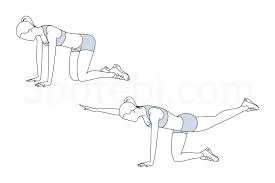
Strength, balance, and coordination are all enhanced by the powerful core and spine-stabilizing exercise known as Bird Dog. With your knees behind your hips and your wrists beneath your shoulders, begin on your hands and knees in a tabletop posture.
Stretch your right arm forward and your left leg backward until they create a straight line with your body while maintaining a flat back and an engaged core. Hold for a few seconds, then switch sides and gently go back to the beginning position.
This deliberate motion improves stability, avoids excessive back rounding or arching, and strengthens the deep core and back muscles that support the spine. Regular Bird Dog exercise enhances general functional strength, spinal alignment, and posture.
Seated Spinal Twist:
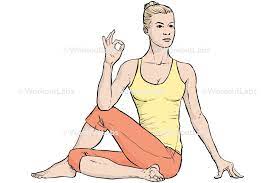
A mild yet effective stretch that enhances posture, eases tension, and increases spine flexibility is the seated spinal twist. Sit on the floor with your legs straight out in front of you to do it. Maintaining your left leg extended or bent for comfort, place your right foot on the outside of your left thigh and bend your right knee.
Position your left elbow on the outside of your right knee and your right hand on the floor behind you for support. Looking over your shoulder, slightly rotate your body to the right as you exhale and stretch your spine as you inhale.
After a few breaths of holding the posture, flip sides. This exercise promotes a more erect, aligned posture, increases spinal mobility, and relieves back tension.
Plank:

A basic core-strengthening exercise that significantly improves spinal alignment and stability is the plank. Lift your body onto your forearms and toes while maintaining your elbows just behind your shoulders. To begin, lie face down. Avoid drooping or arching in the lower back by using your legs, glutes, and core while keeping your head straight from your heels.
Breathe steadily and hold the position for as long as you can. This exercise lowers the risk of back pain, trains the body to maintain good posture in daily tasks, and develops the deep abdominal and back muscles that support the spine.
Side Plank:

A great exercise for maintaining spinal alignment, strengthening the oblique muscles, and enhancing core stability is the side plank.
To perform this, lie on your side, stretch your legs, and stack them on top of each other. Raise your hips off the floor so that your head and heels form a straight line, placing your bottom elbow just beneath your shoulder.
Maintain the posture without allowing your hips to sink by keeping your core active. You can elevate your top leg or extend your top arm toward the ceiling for extra difficulty. By avoiding spinal misalignment, Side Plank improves balance, strengthens the lateral core and muscles that support the spine, and encourages improved posture.
Bridge Pose:
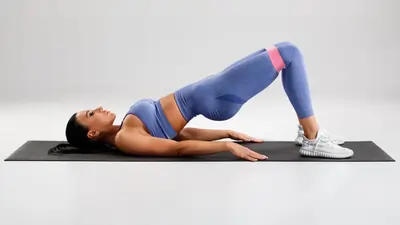
Bridge Pose is a potent practice that gently stretches the chest and spine while strengthening the lower back, glutes, and core. To do it, place your feet flat on the floor, hip-width apart, and lie on your back with your knees bent. With the palms facing down, place your arms next to your torso.
To make a straight line from your shoulders to your knees, as you inhale, press into your feet, contract your glutes, and gradually raise your hips toward the ceiling. After a few breaths of holding the position, let the breath and slowly lower yourself back down. In addition to improving posture and releasing lower back strain, this pose strengthens the muscles that maintain the spine’s appropriate alignment.
Conclusion:
One of the best strategies to boost mobility, lessen back pain, and improve posture is to include spine-straightening exercises in your everyday routine. Every exercise supports the spine and surrounding muscles, from mild stretches like Child’s Pose and Seated Spinal Twist to powerful poses like Plank, Bird Dog, and Superman Pose.
Regularly performing these exercises improves flexibility, balance, and long-term spinal health in addition to helping with alignment correction. These nine exercises can help you develop a stronger, straighter spine and a more confident, healthy posture if you perform them consistently and with the right technique.
FAQs:
Vitamin D
Maintaining the health of the spine requires a well-balanced diet full of vital minerals like calcium and vitamin D. These nutrients can lower the risk of osteoporosis, degenerative disc disease, and persistent back pain while also supporting bone density, muscular function, and general tissue health.
There is no set time period for correcting posture; with regular daily effort and exercises, you may notice some initial improvements in as little as two weeks, while more substantial adjustments may take four to eight weeks. But in situations that are severe or chronic, it could take months of focused exercise to develop long-lasting postural habits that involve muscle stretching and strengthening.
Back Sleeping
This little modification keeps the lower back from arching excessively and preserves the spine’s natural curvature. For further comfort and alignment, think about placing a small lumbar support cushion under your lower back if you’re sleeping on a harder mattress.
Better Posture: By encouraging a neutral spine position, sleeping on the floor may help improve posture and alleviate back pain. Cooling Effect: Especially in warmer areas, the floor’s tendency to be cooler than a mattress might assist in regulating body temperature while you sleep.
The spine cannot be fully straightened by chiropractors. However, using non-invasive and drug-free treatment methods, they can considerably improve pain, disability rating, and spine curvature. Let’s examine scoliosis in detail, including its definition and how a chiropractor may assist.
Incisions are tiny cuts made by surgeons to perform this treatment. A strong cord is inserted through screws that are placed around the outside border of the spinal curvature by a surgeon. The spine straightens when the cord is tightened.
But anticipate that it will take 10–12 sessions spread over 6 weeks before you begin to notice a noticeable effect. You ought to be evaluated at this stage and transferred to the following round of treatment. Your objectives, or how aligned you wish to be, will determine the following step.
Why It’s Beneficial For spinal alignment, sleeping on your back is frequently regarded as the best posture. It maintains your head, neck, and spine in a neutral position while distributing your body weight equally.
Walking puts a lot of strain on the spine, which can alter the way the rest of the body is supported. Your posture might be the root cause of your back pain as you walk.
Lastly, a chiropractic adjustment is far more successful in enhancing general health and offering long-term comfort. Self-cracking could offer short-term respite, but it doesn’t deal with the underlying issue.
It seems obvious that spinal misalignments might result from any type of physical harm. Spinal alignments, for example, can be impacted by any type of trauma, including falls, sports injuries, playground accidents, and more. This also applies to repetitive trauma.
Aerobic exercise
Cardiovascular activity, like brisk walking or moderate jogging, strengthens all the muscles that support your spine, increases blood flow, and supports the health of your discs, which are your spine’s shock absorbers.
Static stretching is the best option if you want to increase muscular relaxation and flexibility after working out. There are other advantages to including stretching in your morning or evening routine, such as boosting your energy levels or promoting relaxation at the end of the day.
Strengthening and extending the muscles in the upper back, chest, and core is essential for correcting bad posture. Scapula squeezes, which include pressing your shoulder blades together for 30 seconds at a time, and rows, which involve pulling your elbows back like you’re rowing with a resistance band, are two exercises that strengthen your shoulders.
Back and neck pain may be avoided or lessened by side sleeping with one leg propped up by bedding or in the fetal position, which is a curled posture. As long as the head and neck are adequately supported by a cushion, some people find that sleeping supine, or flat on their back, can also assist with back pain.
To keep your spine straight, sleep on your back with a pillow between your knees and a supportive neck pillow, or on your side with a cushion between your knees and a neck pillow. If at all possible, avoid sleeping on your stomach; however, if this is not feasible, place a cushion beneath your abdomen. The correct mattress and pillow for your body can also provide crucial support for proper spinal alignment.
Either sleep on your side with a cushion between your knees and a supporting neck pillow, or sleep on your back with a pillow between your knees and a supportive neck pillow to maintain a straight spine. Prevent sleeping on your stomach if at all possible, but if you can’t prevent it, position a pillow below your abdomen. Important support for healthy spinal alignment may also be obtained by using the right mattress and pillow for your body.
A few issues may arise if you attempt to adjust your posture and misalignment without seeking expert advice. For instance, you may be doing more harm than good to your spine. Inappropriate yoga poses can cause severe pain and worsen existing issues.
Stronger muscles in your spine help your back maintain its proper posture. Walking strengthens your muscles and provides your body with the means to recover itself. Your spine will be correctly aligned after seeing a chiropractor, but regular walking will help maintain that alignment.
Keep your ears above your shoulders, keep your weight on the balls of your feet, and stand or sit tall with your shoulders back, head level, and abdomen softly drawn in to preserve a straight spine. A healthy, straight spine is also supported by consistent core-strengthening stretches and exercises, good sleeping position, and deliberate attempts to move often.
Simple stretches like the standing wall stretch, downward dog, bird dog, and sitting cat-cow can help you improve your posture in only ten minutes each day. Additionally, you should use appropriate sitting postures and use a cushion to support your lower back.
References:
- Cadman, B. (2025d, April 14). How to strengthen the lower back. https://www.medicalnewstoday.com/articles/323204
- Back exercises in 15 minutes a day. (n.d.-d). Mayo Clinic. https://www.mayoclinic.org/healthy-lifestyle/adult-health/in-depth/back-pain/art-20546859
- Cronkleton, E. (2025a, April 14). 12 exercises to improve your posture. Healthline. https://www.healthline.com/health/posture-exercises
- 8 Great exercises to safeguard your spine: John Regan, MD, orthopedic spine surgeon. (n.d.). https://www.spinegroupbeverlyhills.com/blog/8-great-exercises-to-safeguard-your-spine
- 9 easy stretches for your lower back. (2024, July 23). PEH. https://www.parkwayeast.com.sg/health-plus/article/easy-lower-back-stretches
- Best exercises for herniated disc: 9 safe moves to strengthen and heal your spine. (n.d.). https://www.bswhealth.com/blog/best-exercises-for-herniated-disc
- Top spine exercises to improve posture & relieve back pain. (n.d.). Rehabilitation Center in Hyderabad |Transitional Care | Physiotherapy Center-Brinnova. https://www.brinnovacare.com/top-10-spine-strengthening-exercises-for-better-posture
